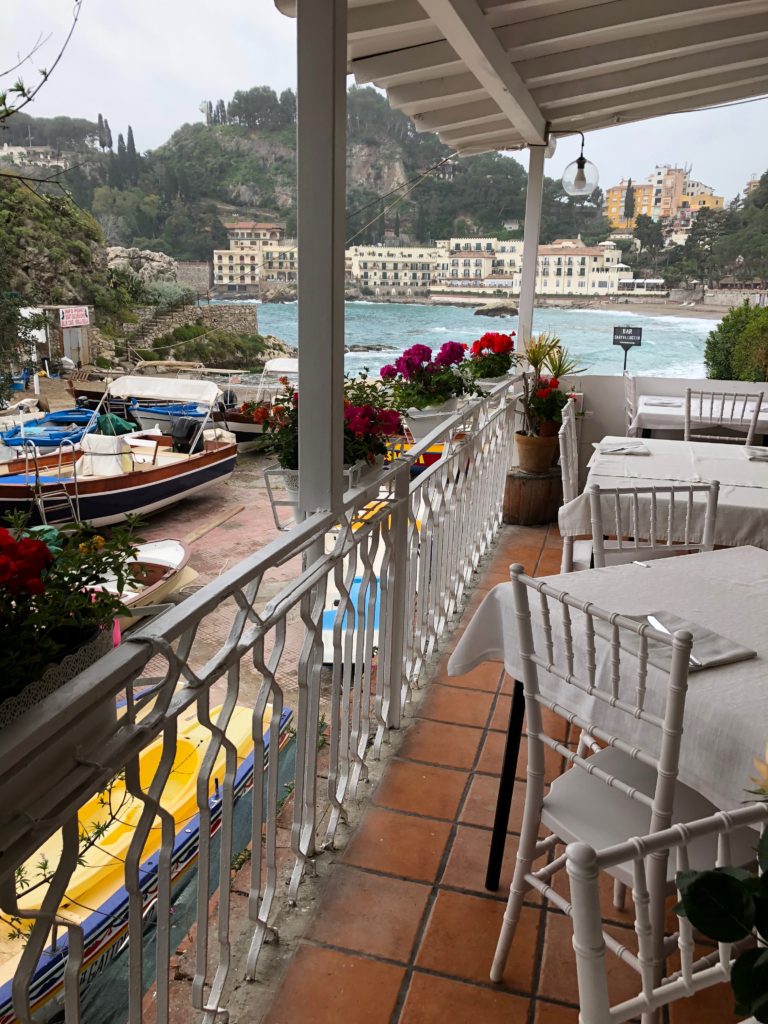Our first trip to Sicily began in the famous resort town of Taormina where on a clear day Mount Etna looms large from on high, and the aquamarine blue waters, with crashing waves and dark, rocky beaches, beckon below.
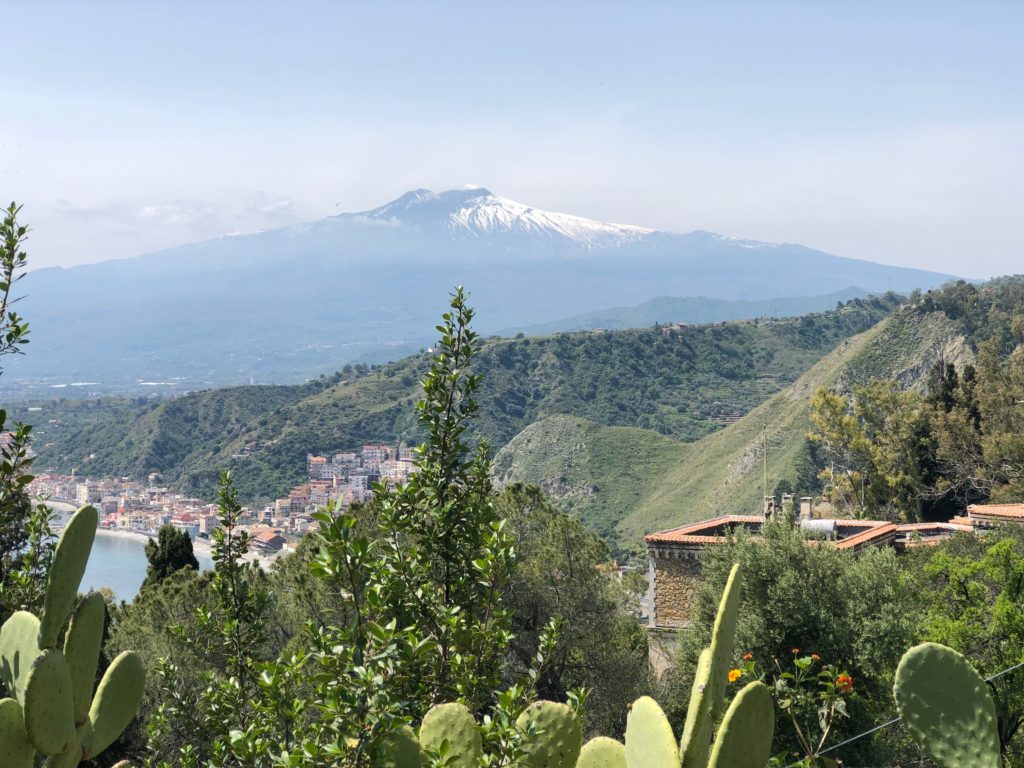
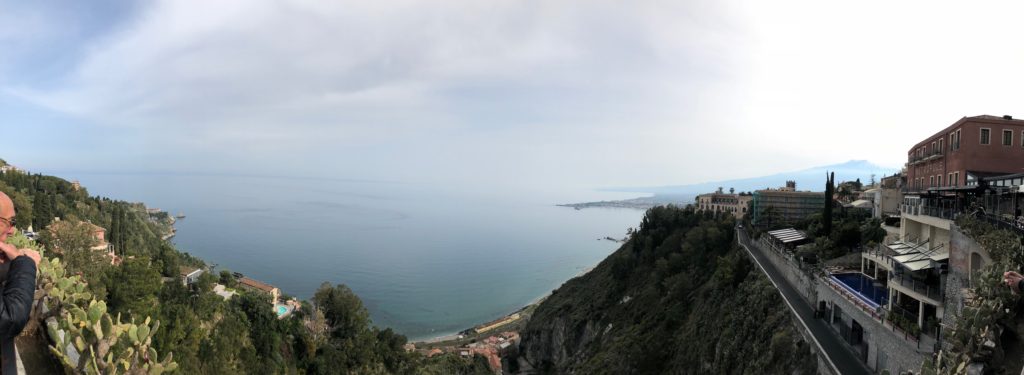

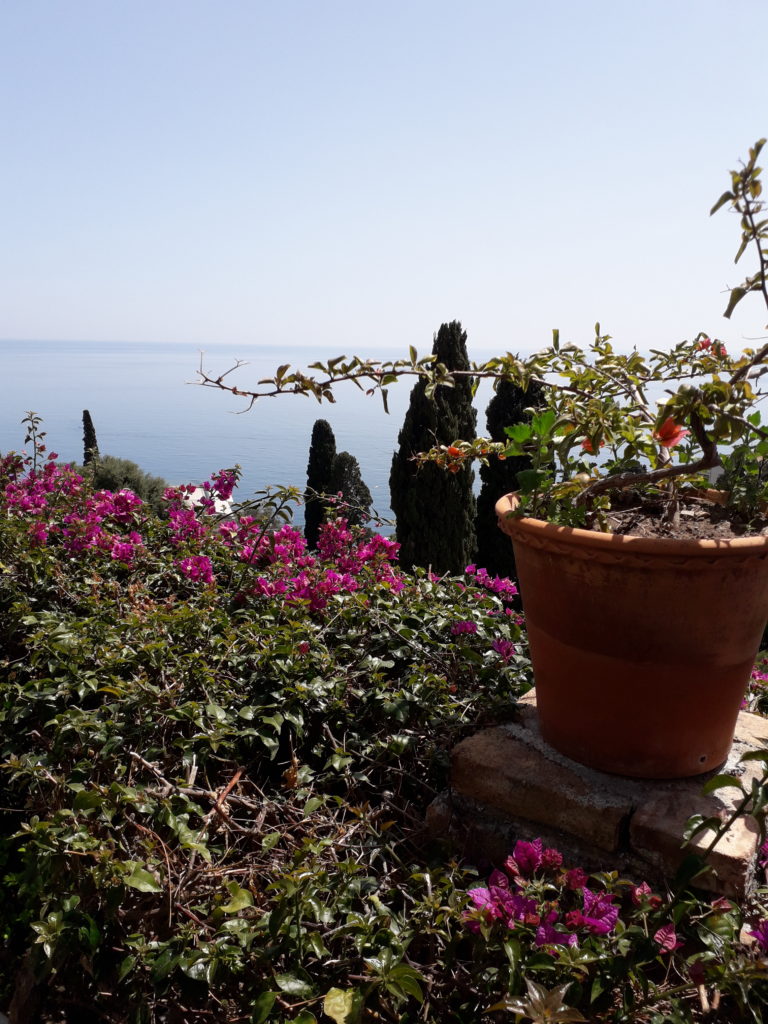
We arrived in Sicily at the Catania airport, along with half of Italy. The rental car area was packed with folks sitting outside, looking like they were ready for a long wait, so we grabbed our ticket number and did the same. An hour later, we headed north towards Taormina, with Google Maps as our guide and Kevin taking the helm of a stick shift Alfa Romeo, a little rusty after many years of automatic cars. He quickly got the hang of the gears and was also tested with some steep hills and tight parking spaces while I alternated between praying for our safety and cursing like a sailor. I’m not proud of my cursing, but it’s what I do when I am scared to death, which happened multiple times as we wound our way on narrow roads hugging the steep mountains, as cars seemed to drive straight at us, and other cars passed us on spaces that made me cringe.
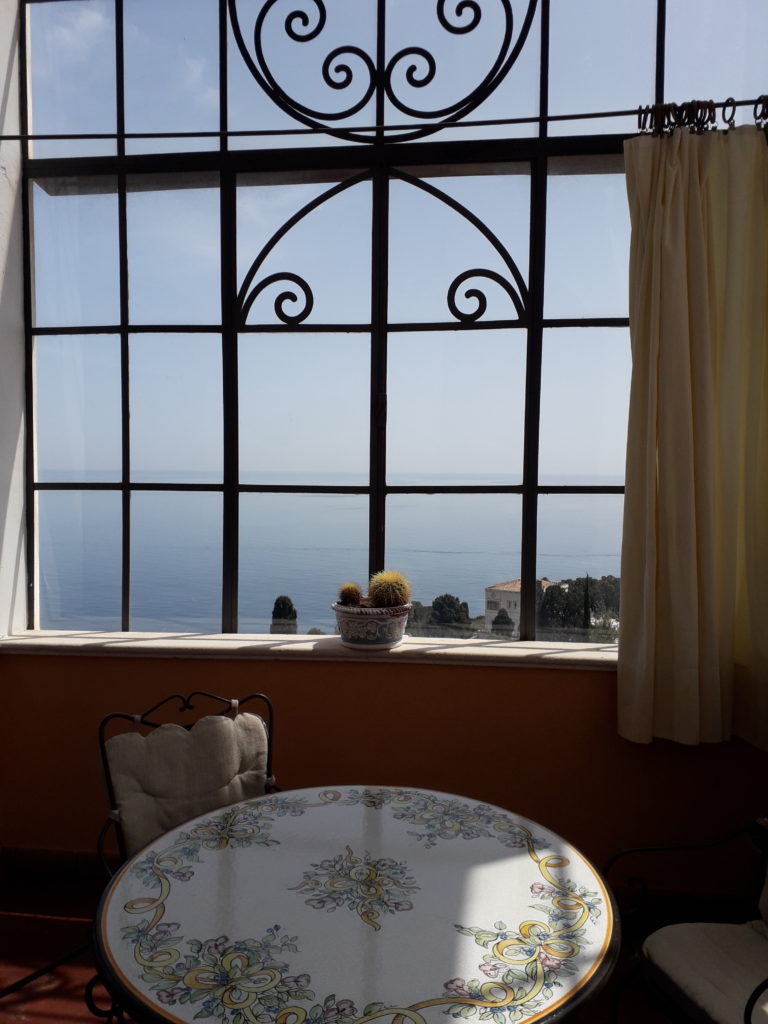
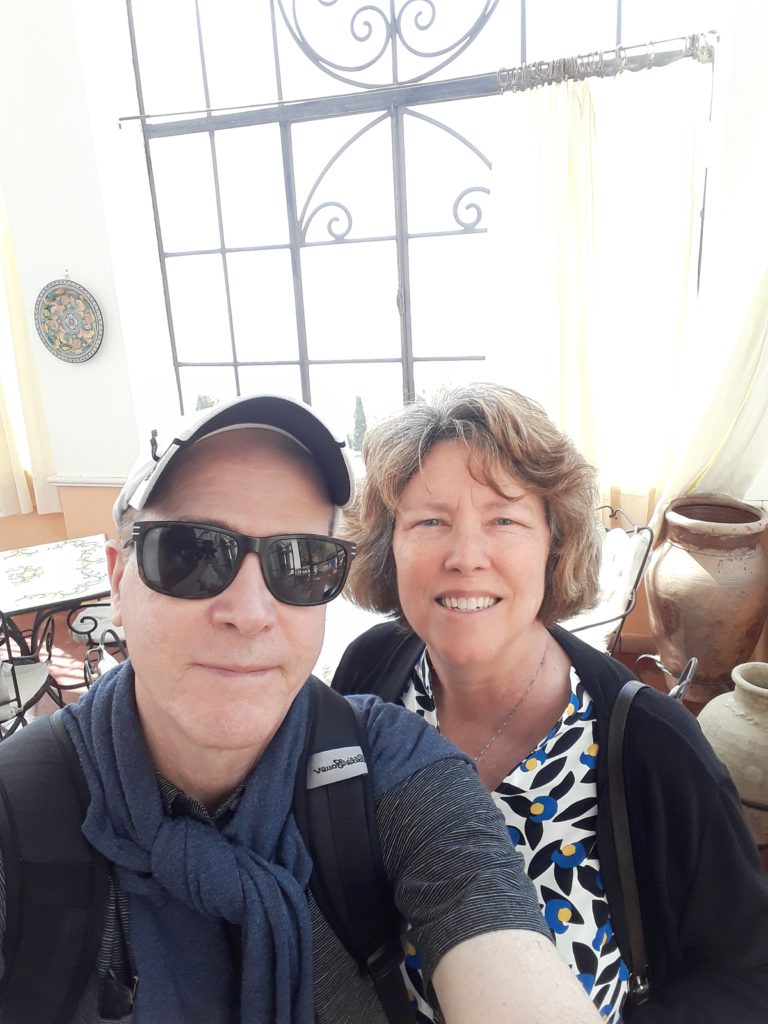
Our marriage survived and Kevin parked the car in the tightest spot I’ve ever seen, down a precarious hill of our hotel. The view to Mount Etna from the hotel was our reward and we sat outside while our room was getting cleaned, listening to a wedding ceremony performed in a venue below us, and gazing out at the blue Ionian Sea. http://www.belsoggiorno.com
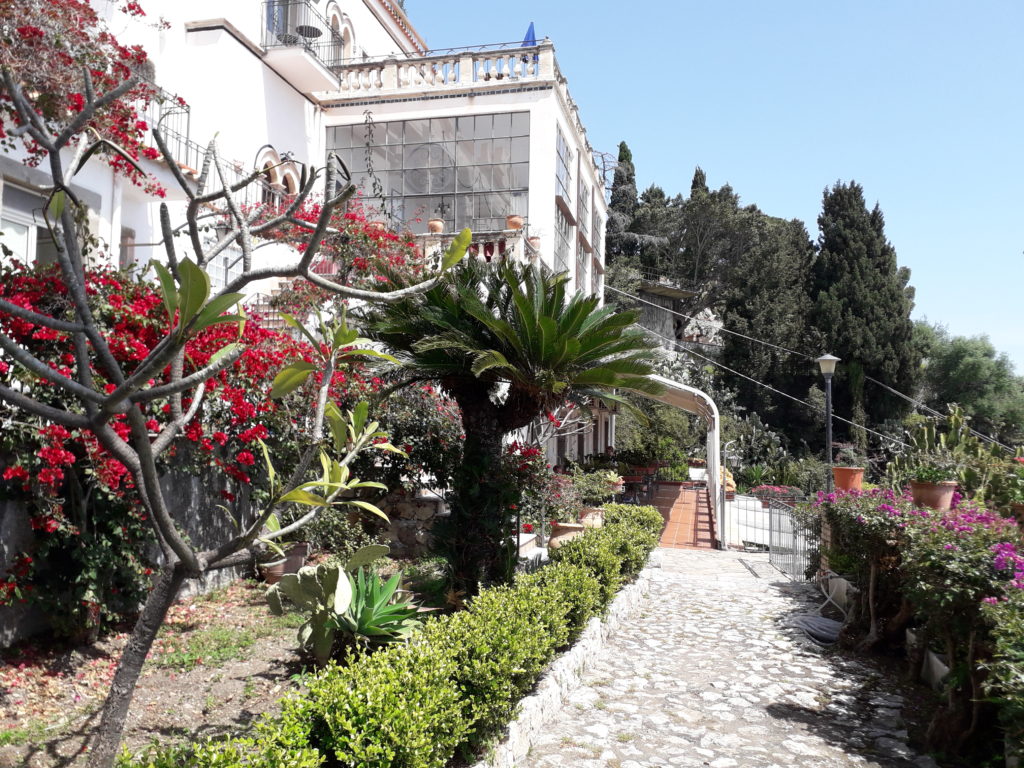
Taormina has two sides- one in the mountain area and one by the sea. After dropping our luggage off (hundreds of steps below the reception desk and our car), we walked up the steep hills to the main part of the upper town, ready to explore.
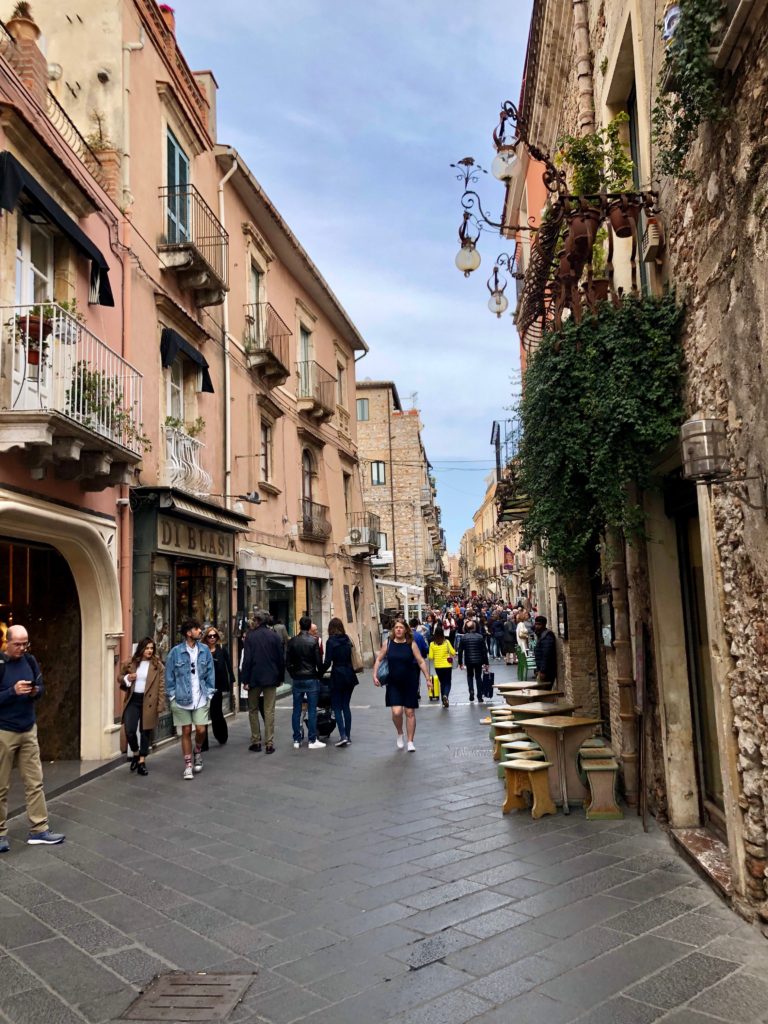
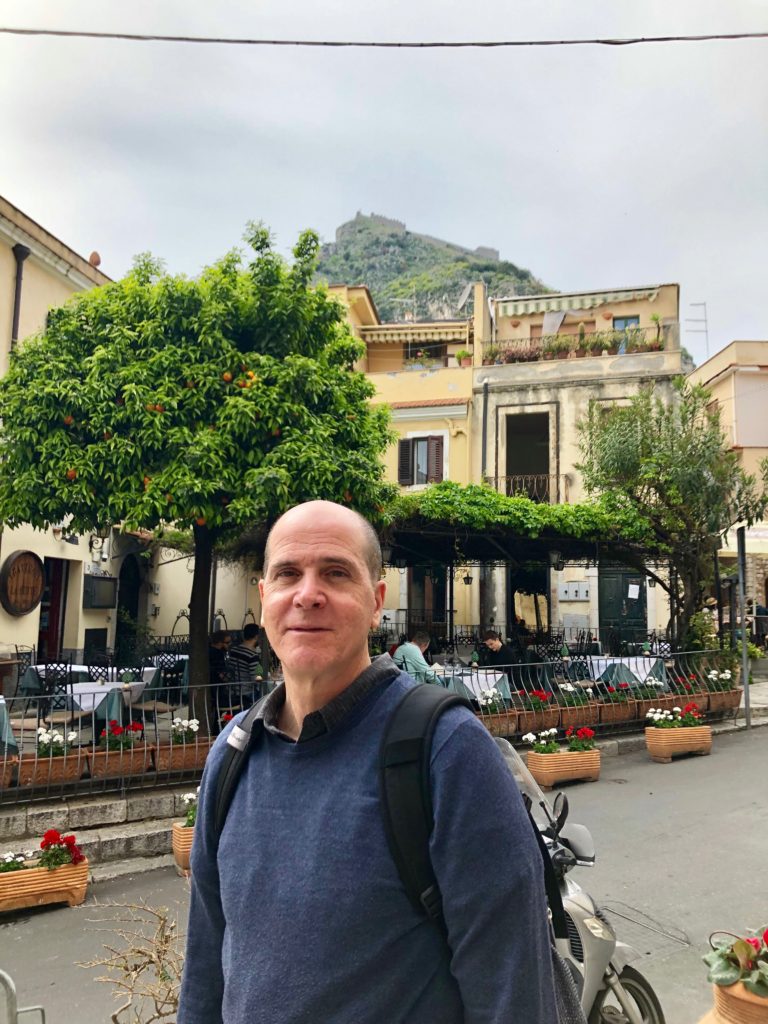

Taormina has been ruled by Siculans, Greeks and Romans over the years, and a number of celebrities and members of royal families historically spent their summers in this town. The main roads and alleys feel medieval, with Arab influences throughout. Because we arrived on the Saturday before Easter, the churches were decorated with flowers and depictions of the crucifixion and death of Jesus, which we expected would change to his rising from the dead on Easter Sunday. Throughout the town, in the churches and along the Piazzas and steps, were small Easter baskets filled with soil and what appeared to us to be a form of growing wheatgrass. Each basket had a child’s name in it. They were simple and we guessed that each child of the town planted seeds at the beginning of Lent, putting out the baskets on this Saturday before Easter. We didn’t get into town on Easter Sunday morning to see what happened next, but we imagined that on Sunday morning, the baskets might be filled with chocolate eggs and candy. At least that’s what we imagined would happen!
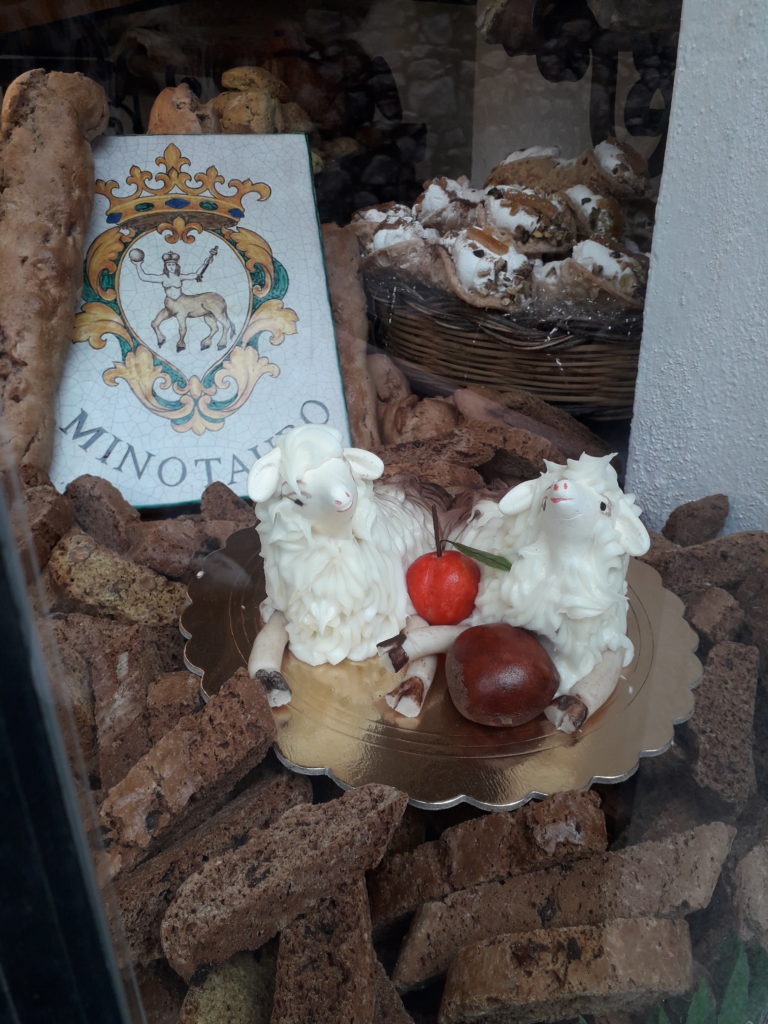
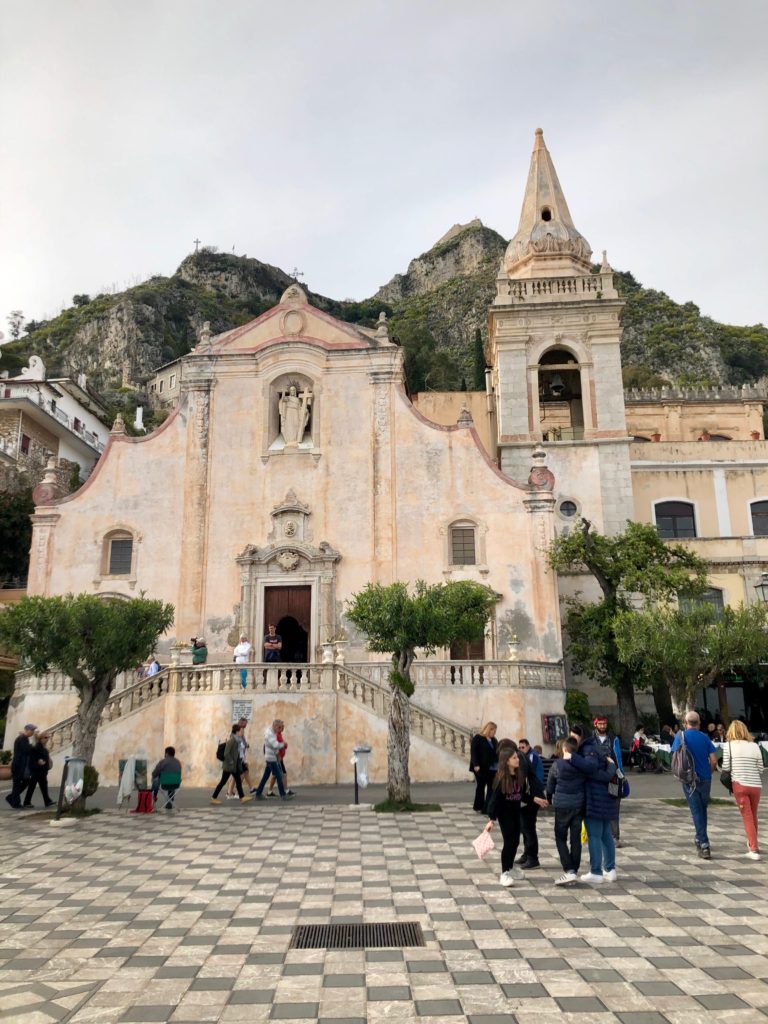
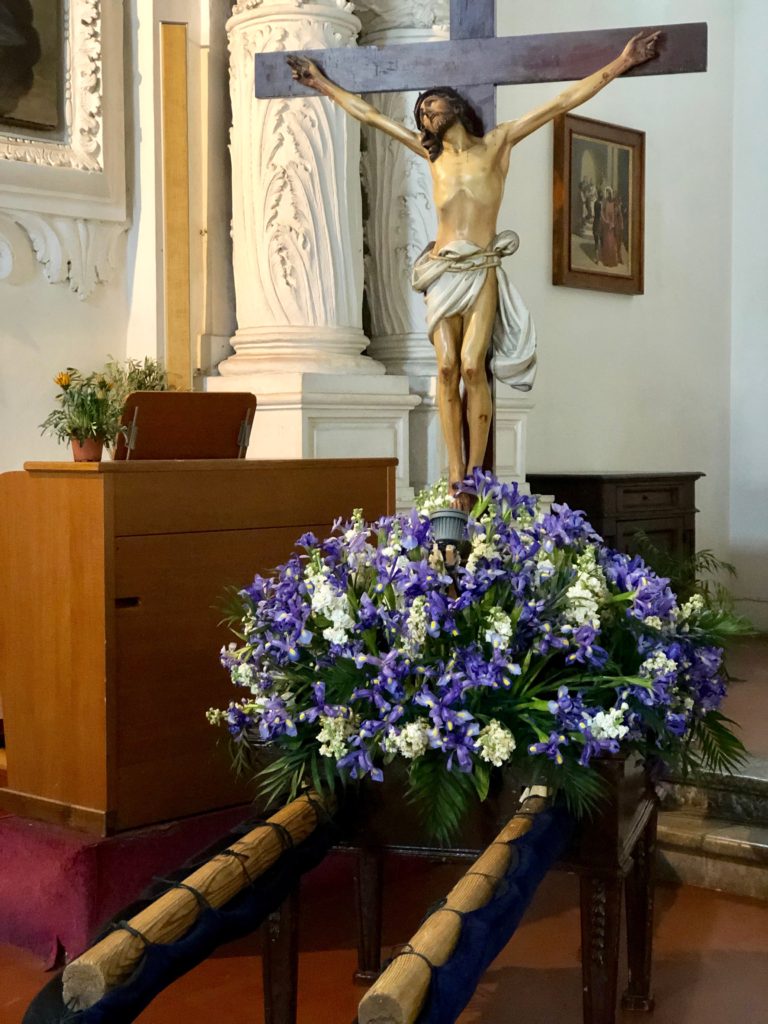
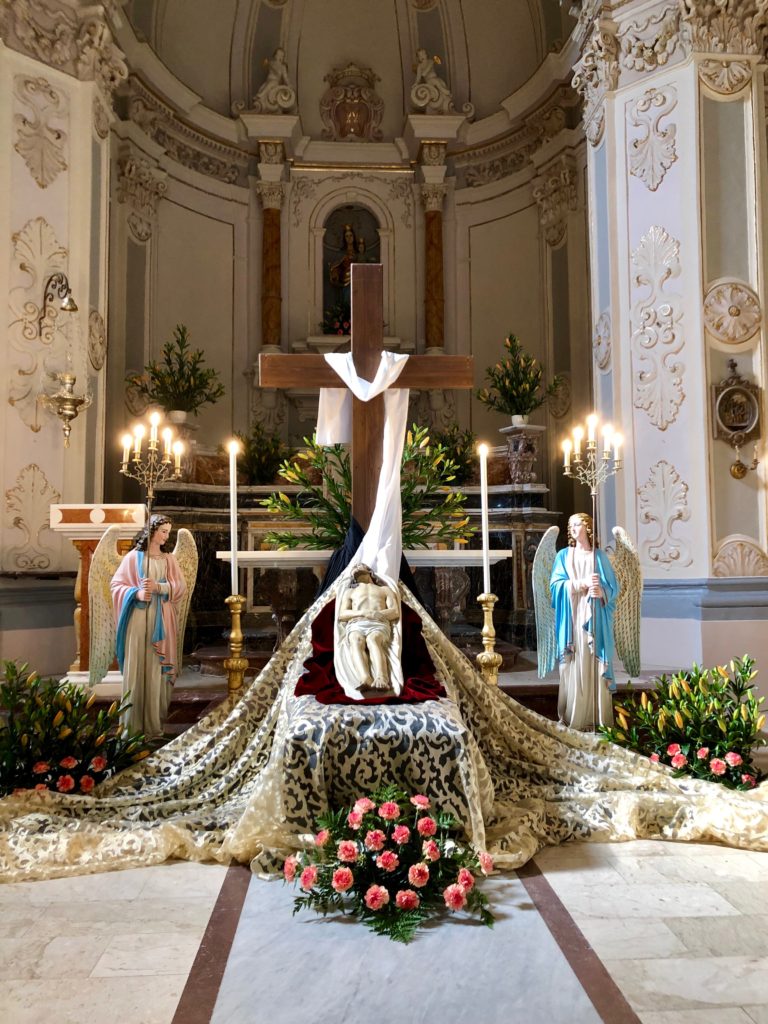
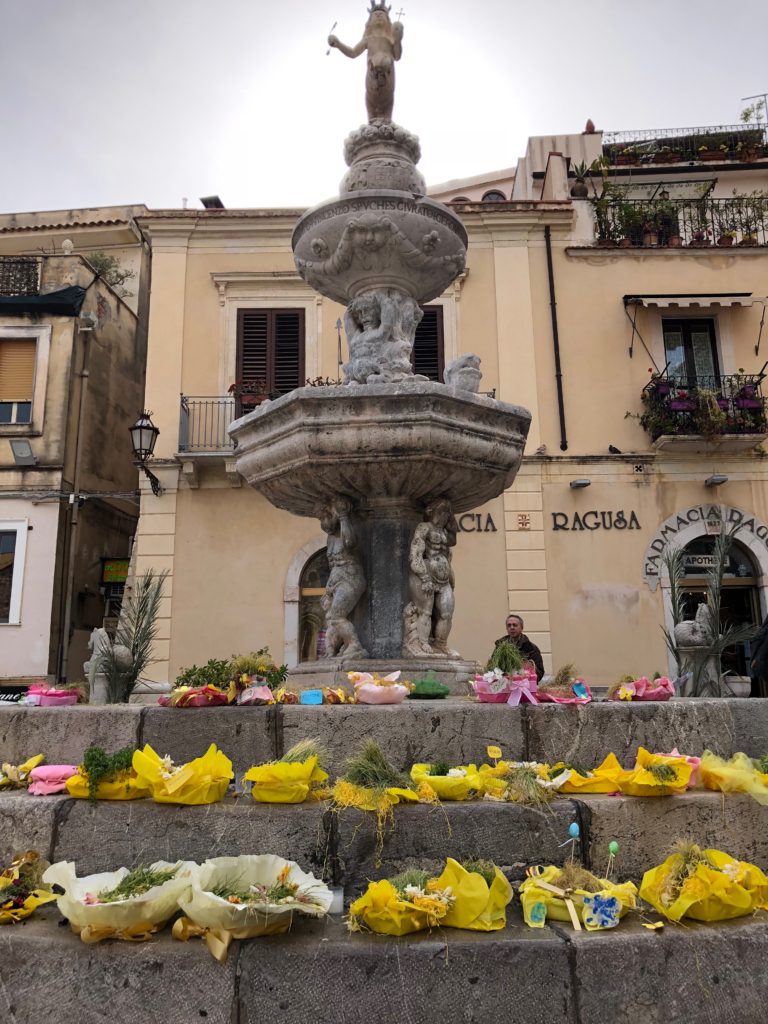
Walking through the town, we quickly saw an ever present symbol of Sicily which is the Trinacria. It became the centerpiece of the Sicilian flag during World War II. During WW II, the Sicilian independents helped the Allies to land on the coasts. After winning the war, the Allies helped Sicily become independent from Italy. Eventually the independentists used a yellow and red flag with Trinacria in the center. They wanted to show their detachment from the Italian government. After the end of World War II the Italian government recognized Sicily as an autonomous region. They still have their own governing rules, even though Sicily is a part of Italy.

The Trinacria is the symbol of a three-legged woman. It was first adopted in 1282 by the Sicilian Vespers and is currently the official flag of the autonomous Sicilian region. The woman is a depiction of Medusa, the goddess with snakes for hair, known for her ability to turn mortal men into stone with one gaze. But the goddess is also known for her help in fighting the forces of evil. In the symbol of Sicily, the head of Medusa appears with entwined serpents’ hair and ears of corn or wheat. The ears of wheat represent the fertility of the land. The three legs in the Trinacria Symbol stand for the three promontories of Sicily- Cape Pelorus, Cape Passero, and Cape Lilibeo.
We visited the Greek Theatre, which is the second largest ancient theatre in Sicily after the one in Syracuse. It was originally built in the third century BC, with terrific views of Mount Etna and the sea.
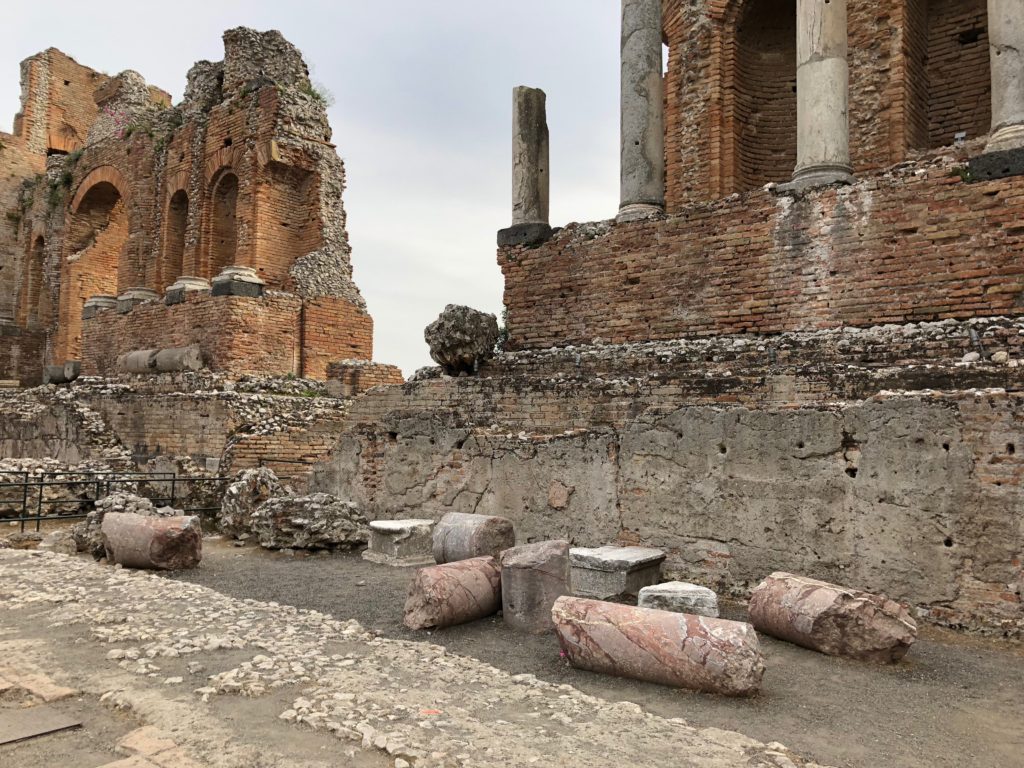
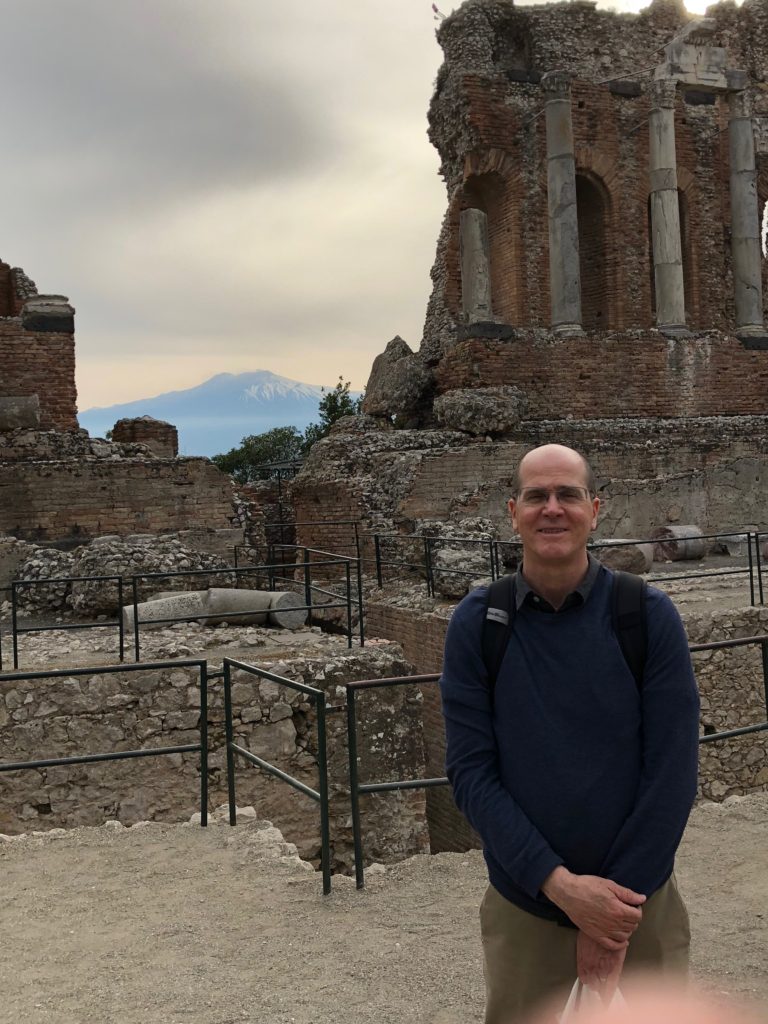
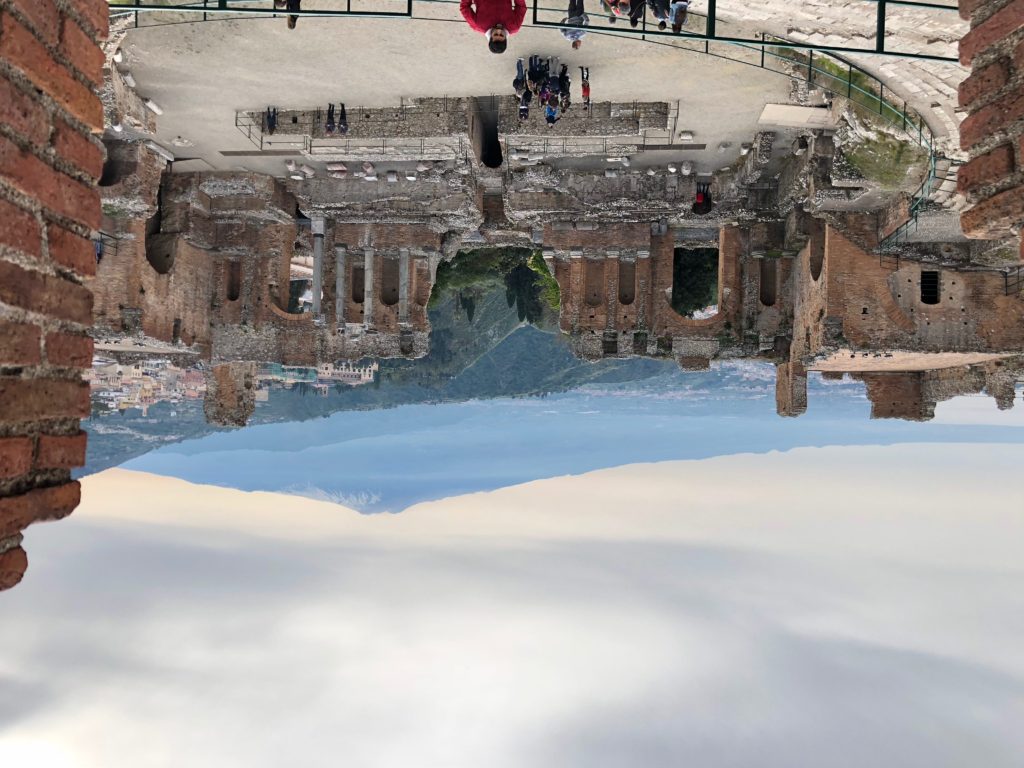
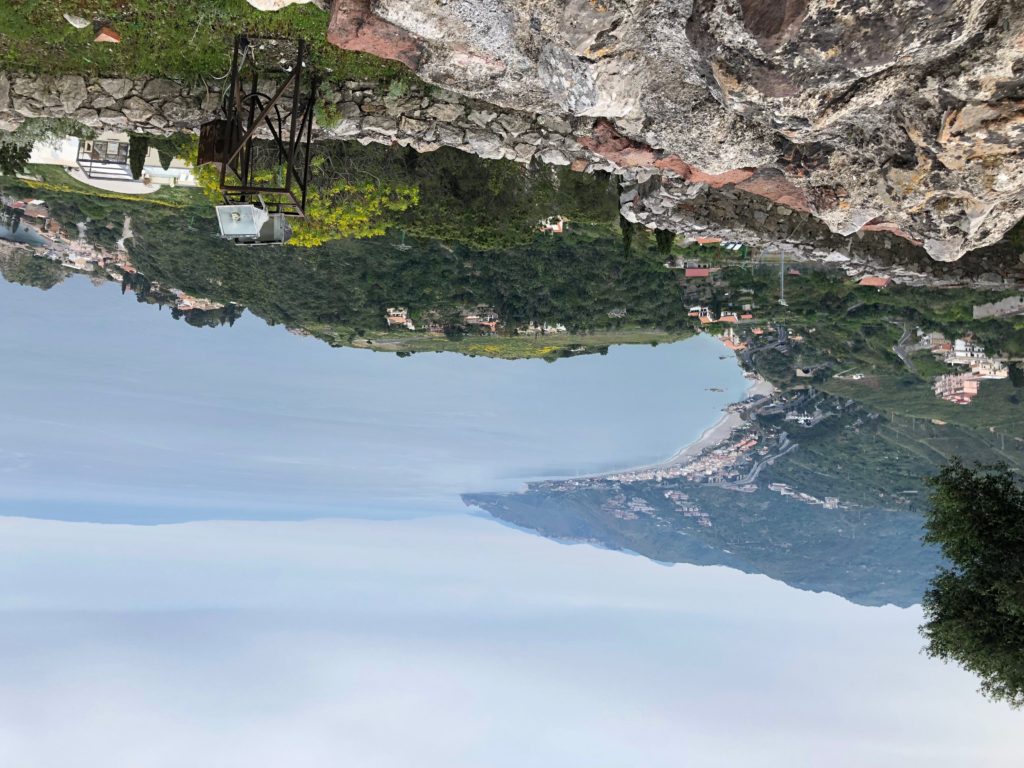
The air in the springtime smelled of orange and lemon blossoms. There is a beautiful public garden/park along our walk from the hotel, with a beautiful vista. It was a favorite spot of Czar Nicholas of Russia when he would visit Taormina in the summers. We (ok, I) imagined what we could do in our backyard if we had endless money and gardeners at our beck and call. We loved walking through this park several times a day to and from our hotel.
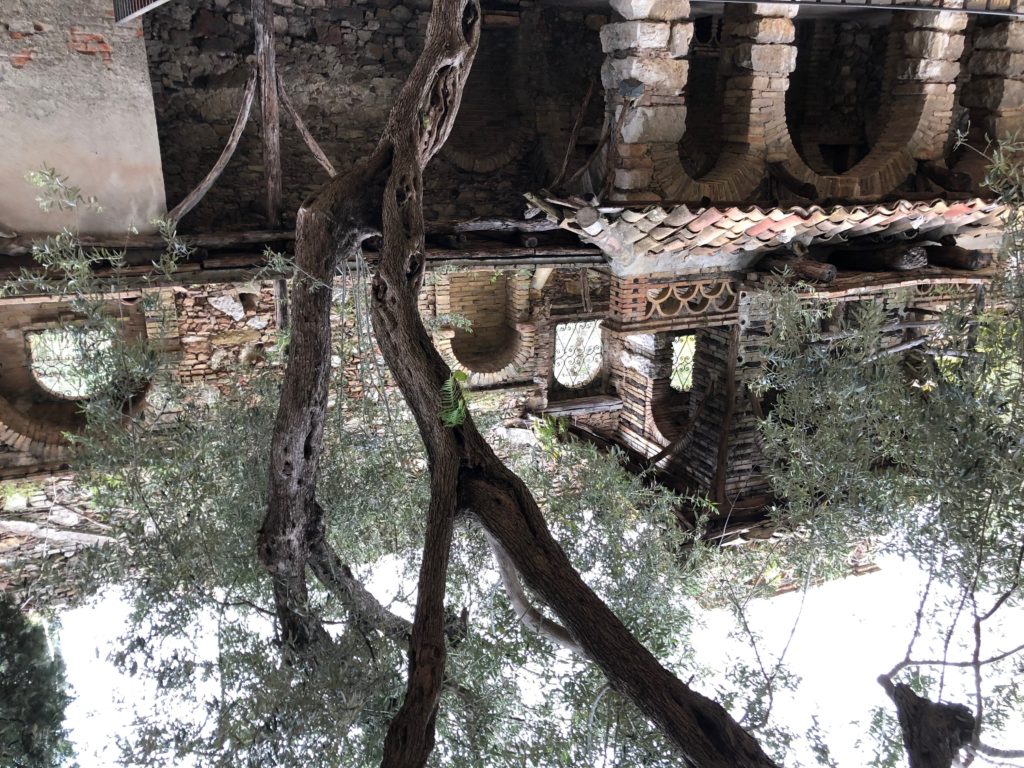
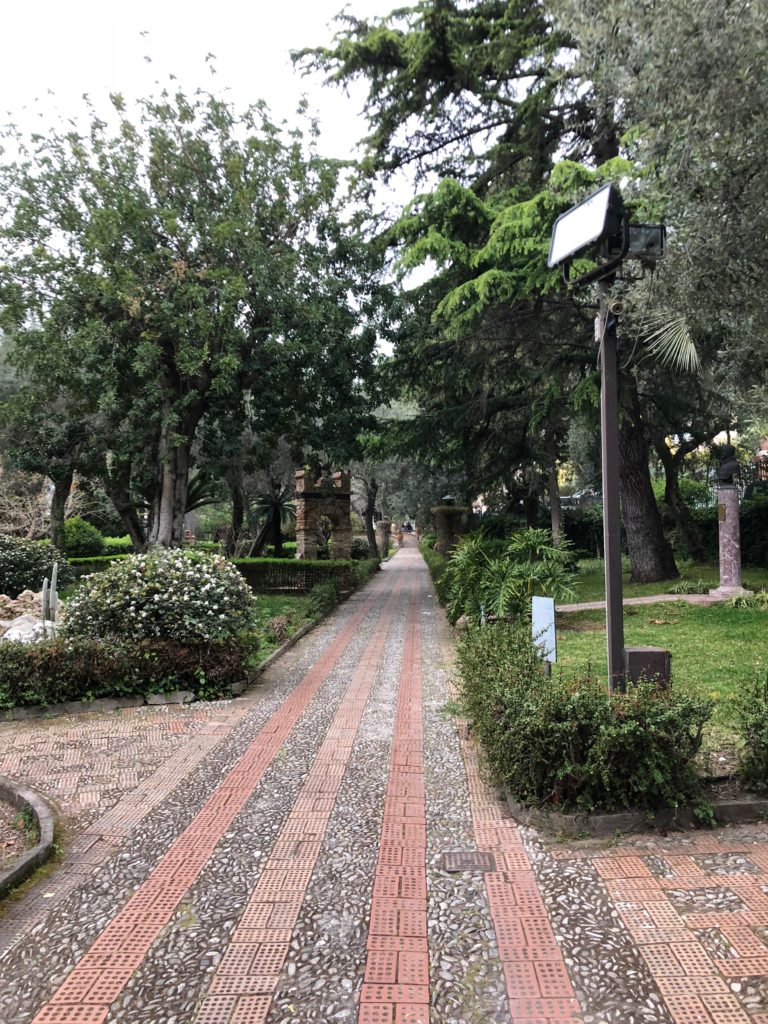
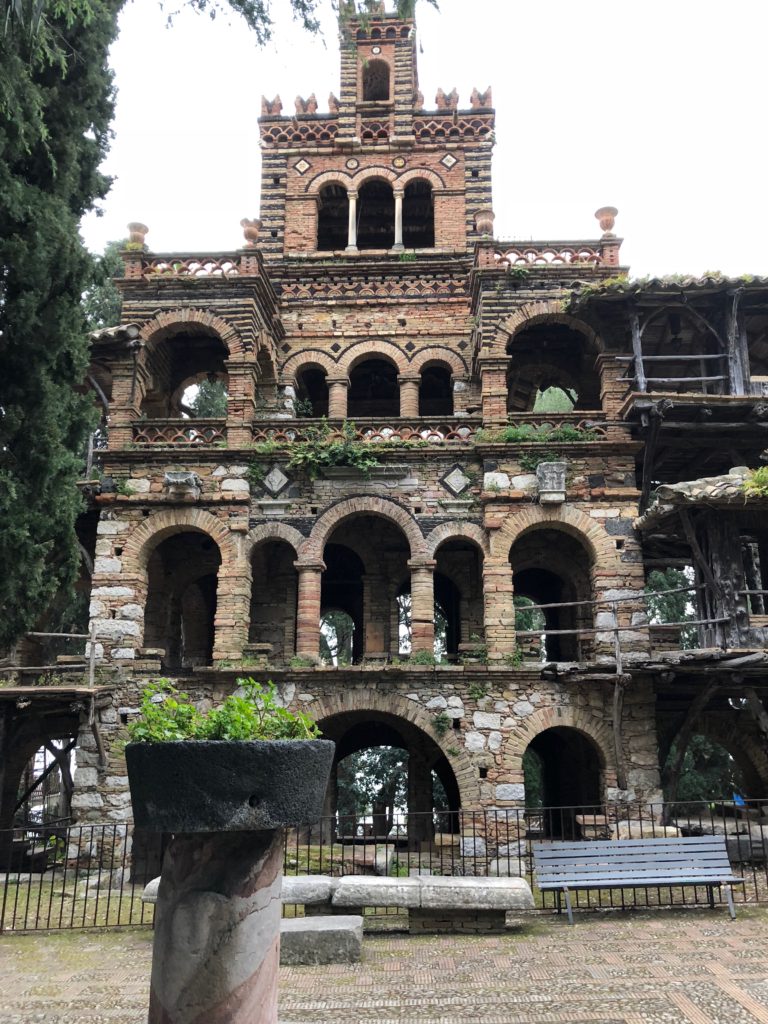
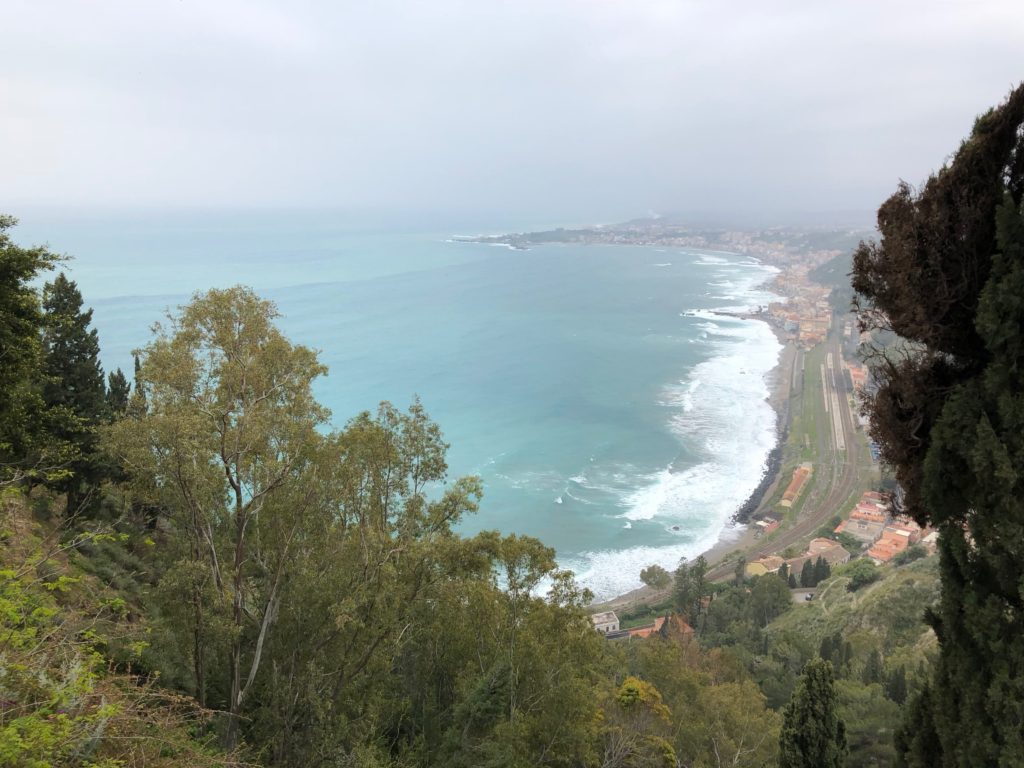
Feeling brave on Easter Sunday, and confident that families would be spending time indoors with their loved ones, we decided to drive down to the coast to see the beach below us. BAD IDEA. Once again we were on precarious narrow roads driving down the hillside and there were no easy parking spots, so after I peered out the car window at the coastline (while Kevin kept his eyes glued to the road), we decided to take the opposite approach and headed back up the mountainside, past Taormina and up to a small town perched on a rock high above Taormina called Castel Mola (or Castelmola).
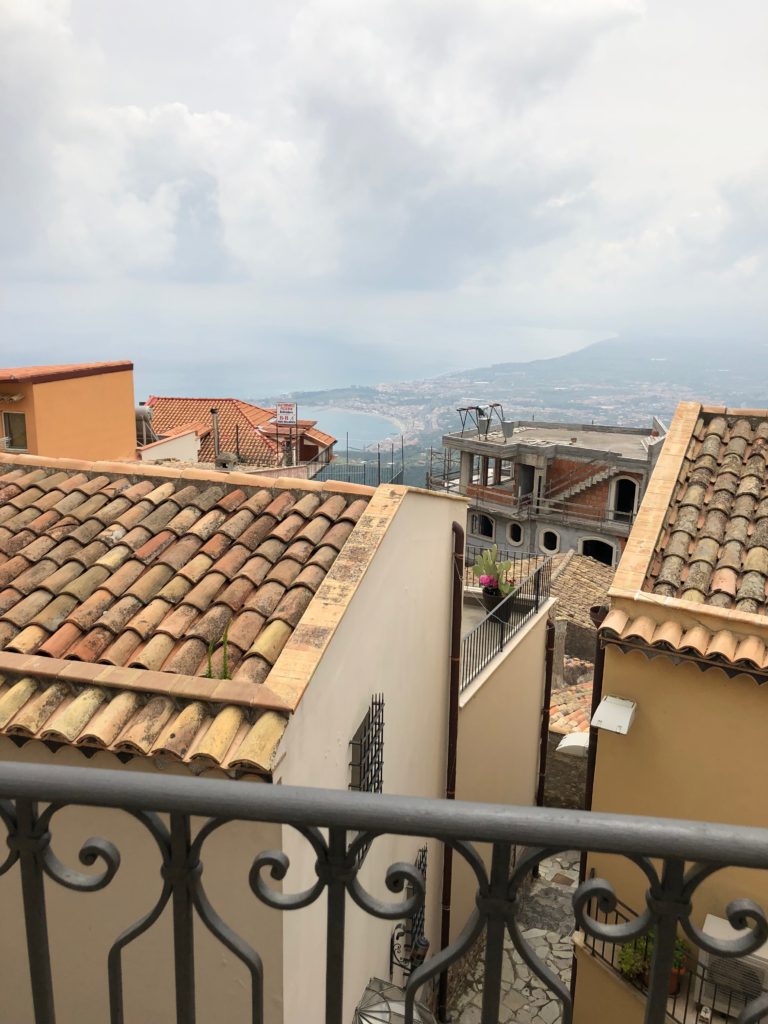
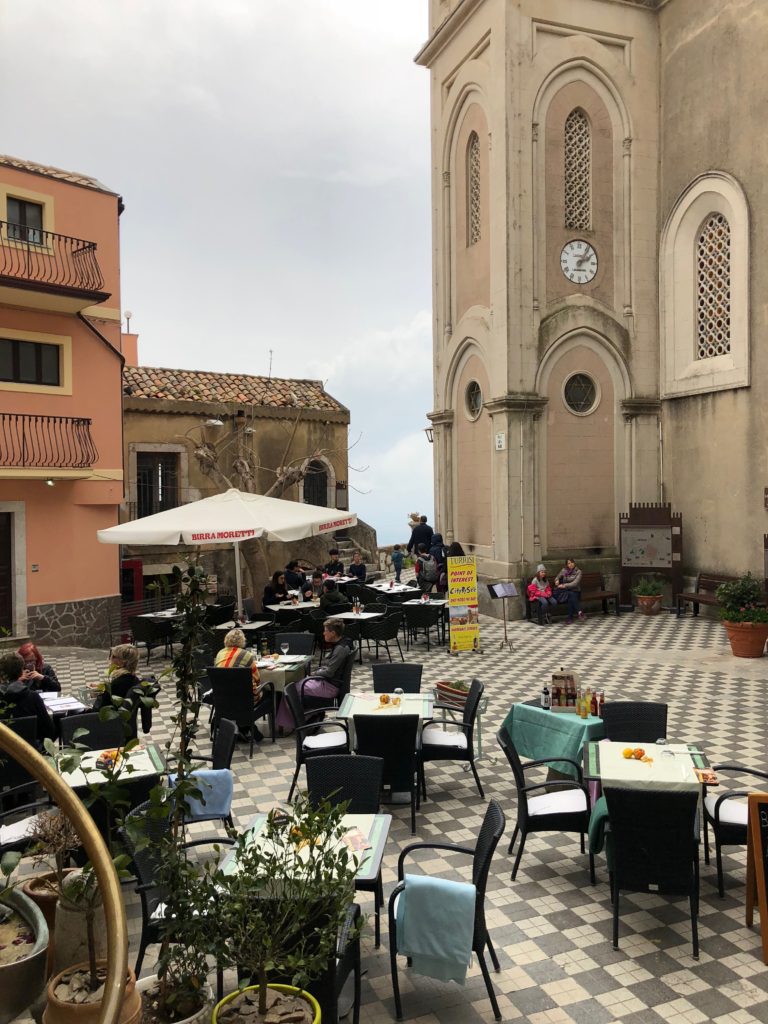
The view was a bit hazy so we couldn’t see Mount Etna from here, but the town was charming and we ate in the main Piazza where the Turrisi family seemed to own every shop and restaurant in the square. One of Kevin’s relatives suggested we eat in the Turrisi Bar, but we opted for the Turrisi family restaurant outside on the Piazza and tried some typical Sicilian fare. See “Sicilian Food to Love” for more on the various delicious food we ate!
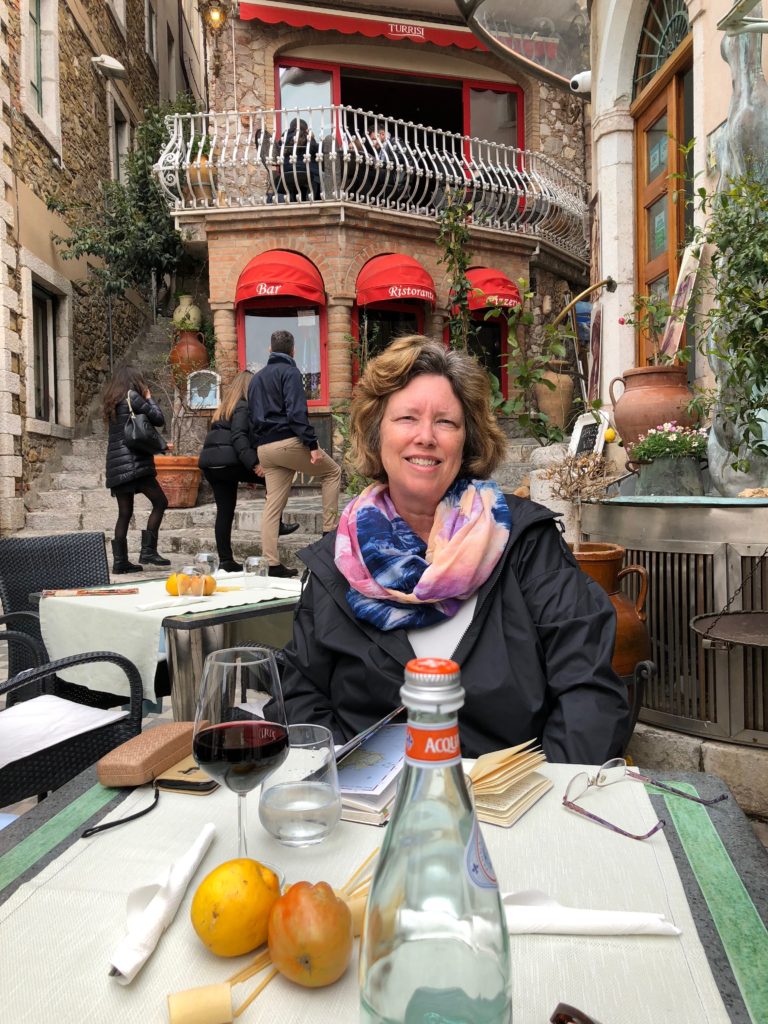
I’m convinced the real reason Kevin’s relatives suggested the Turrisi Bar is the bathroom ‘decorations’ of tiles. The tiles were remarkably similar to those our family saw on our tour of Pompeii with Grandma Suz and the girls (at their tender ages of 9 and 11). Pompeii was a port city and because sailors arrived speaking many different languages, paintings would identify the services a sailor might purchase through symbols and pictures. It certainly peaked the girls’ attention (as well as raised the eyebrows of Grandma Suz) to be hearing all this on our tour of Pompeii. Thankfully in Pompeii, the tiles were high up (but not so high that the girls didn’t get the general picture…..), so not as easy to study.
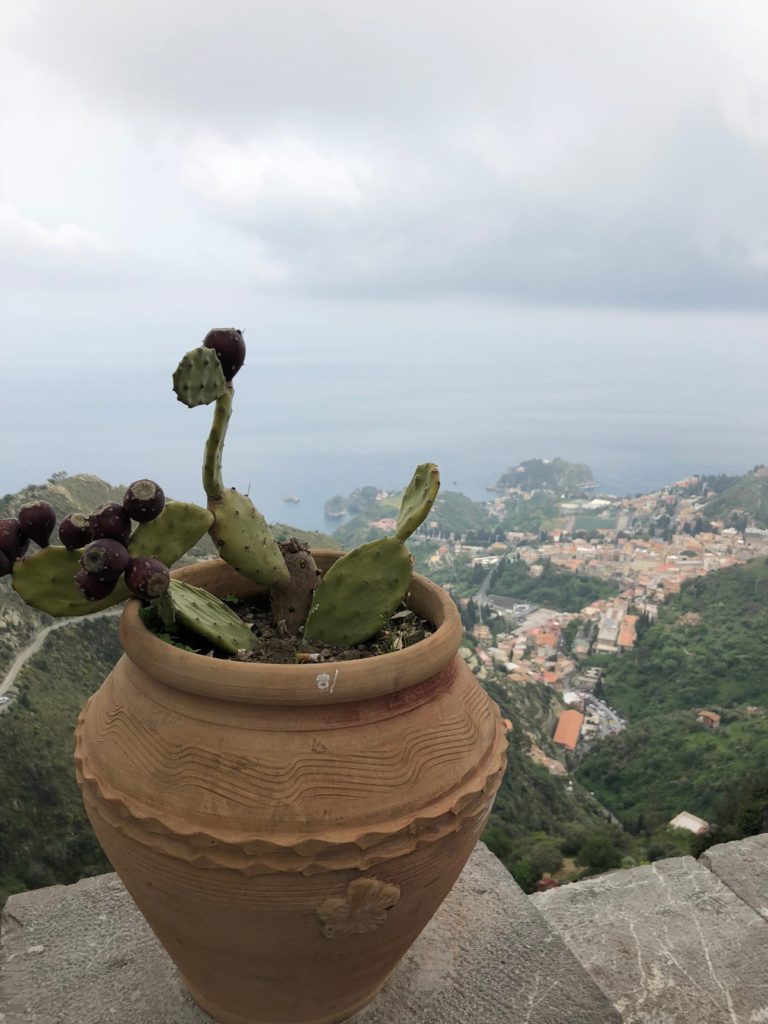
The next day we learned about a funicular skyway cable car that took us down to the coastline without having to drive there, a great use of our Euros! Much more relaxing! Down we went, and we explored the beach with Kevin hiking up his pant legs and sprinting over to a tiny island called Isola Bella once inhabited by an English woman, with a villa and gardens on some craggy rocks.
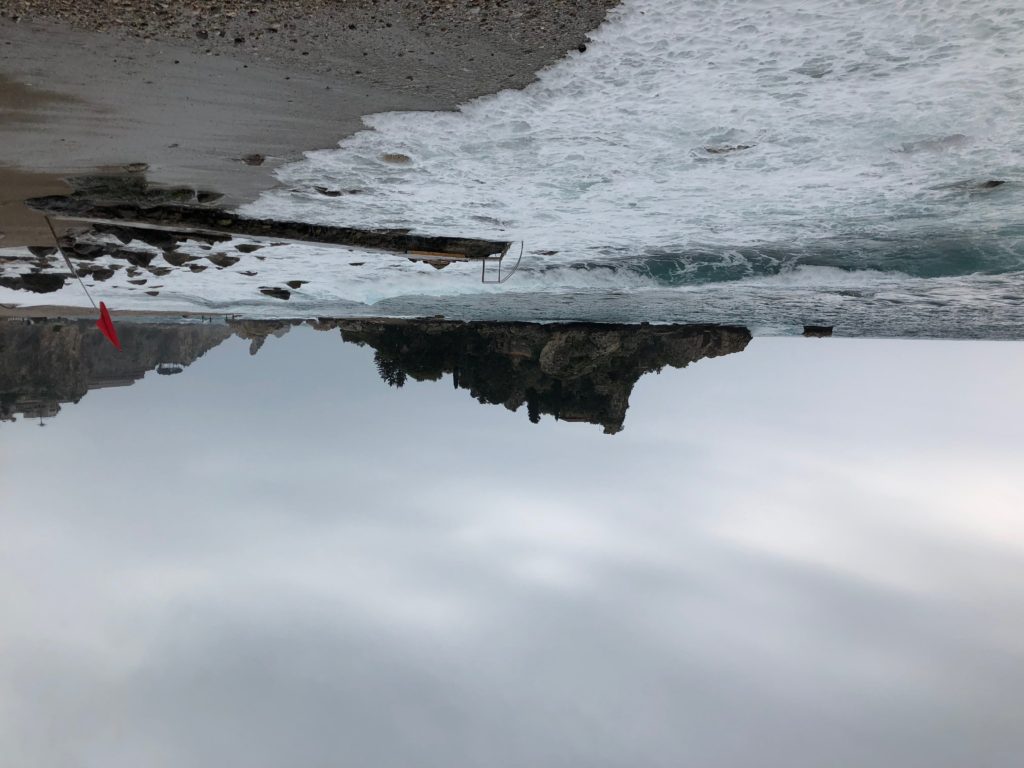
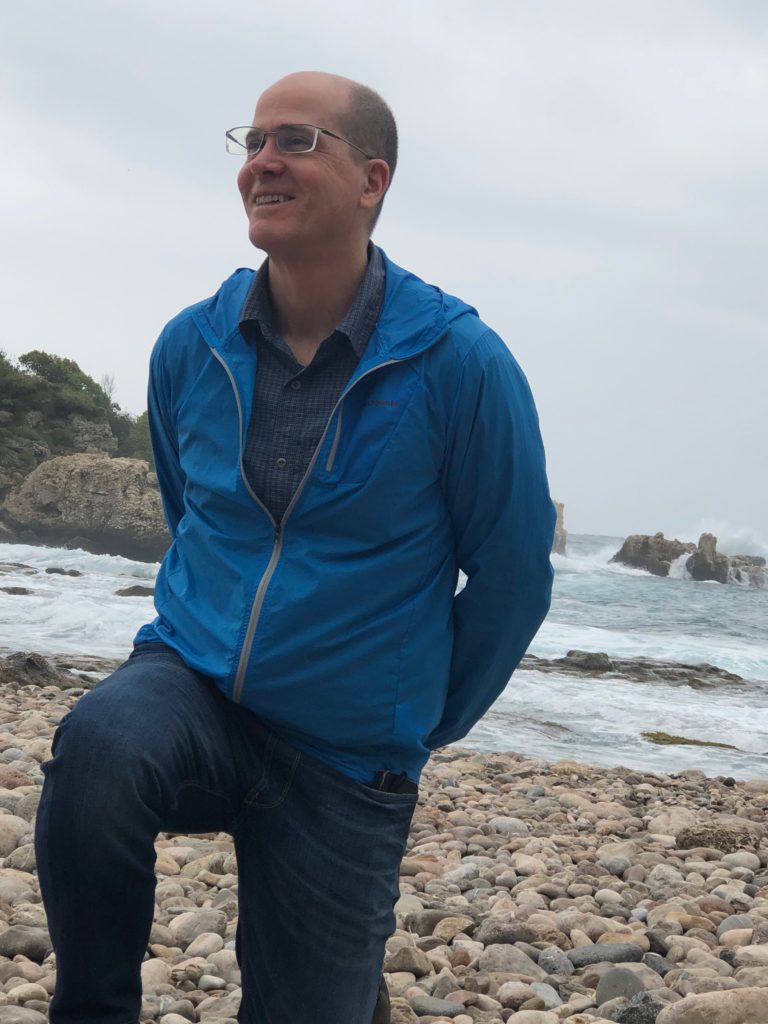
I stayed safely behind and Kevin returned just in time to avoid being stranded over there. The funny part is that once he got across, he discovered that there was a ticket taker charging money to go into the grounds. This person has to traverse over to the island daily according to the tide schedule!
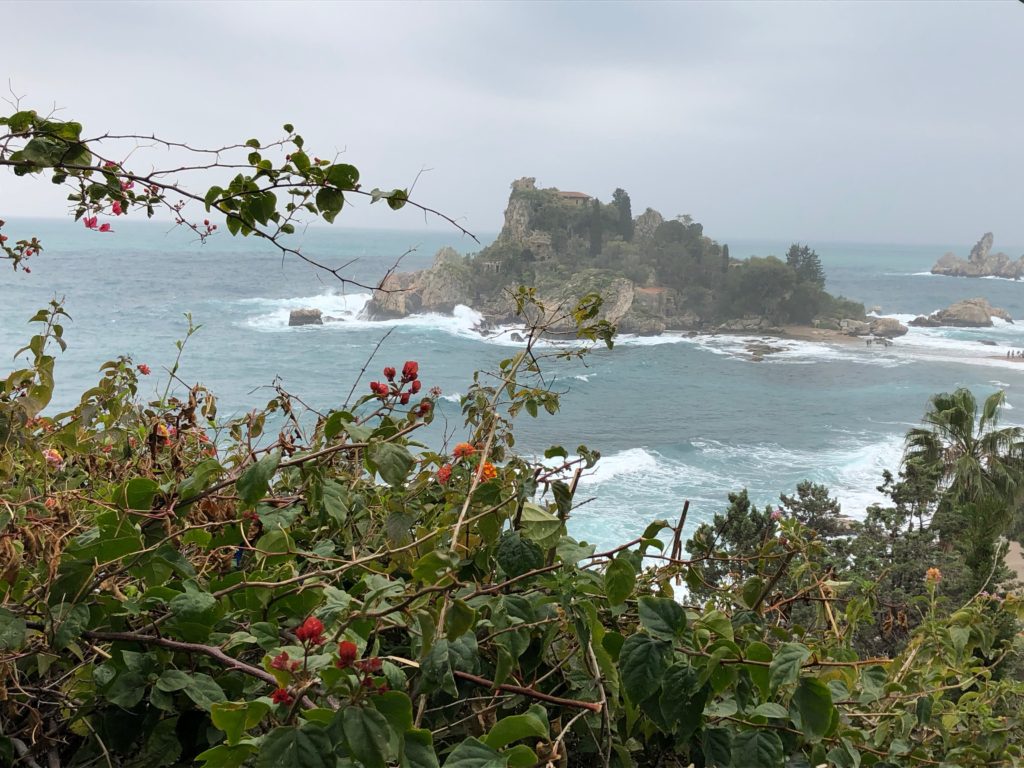
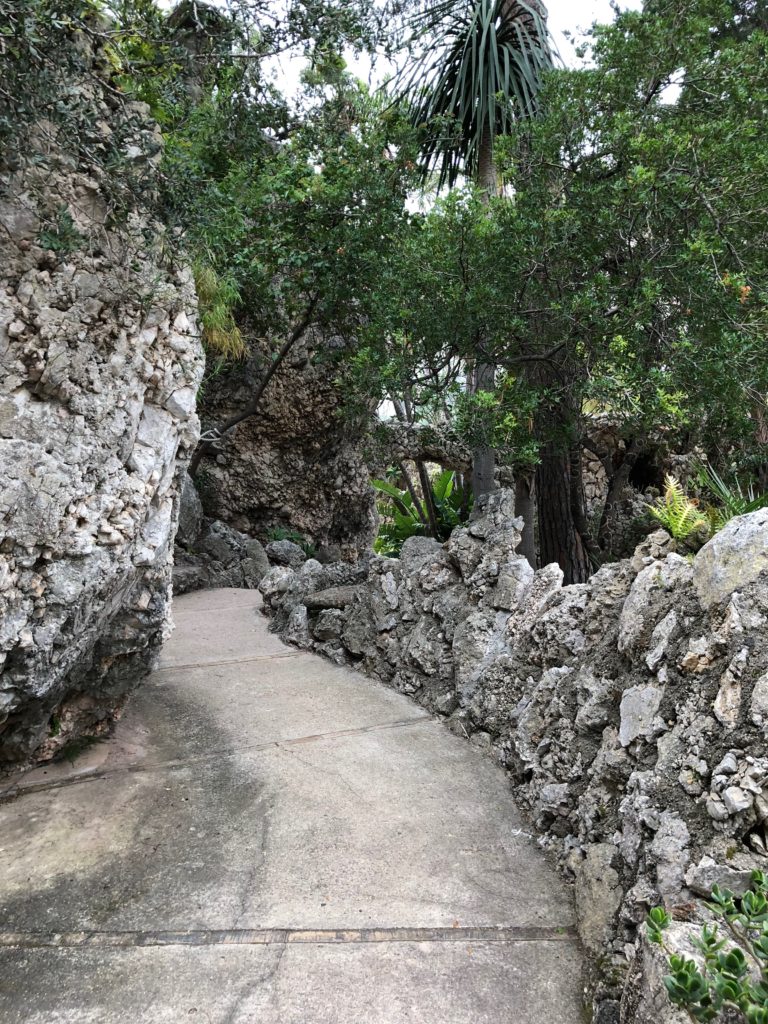
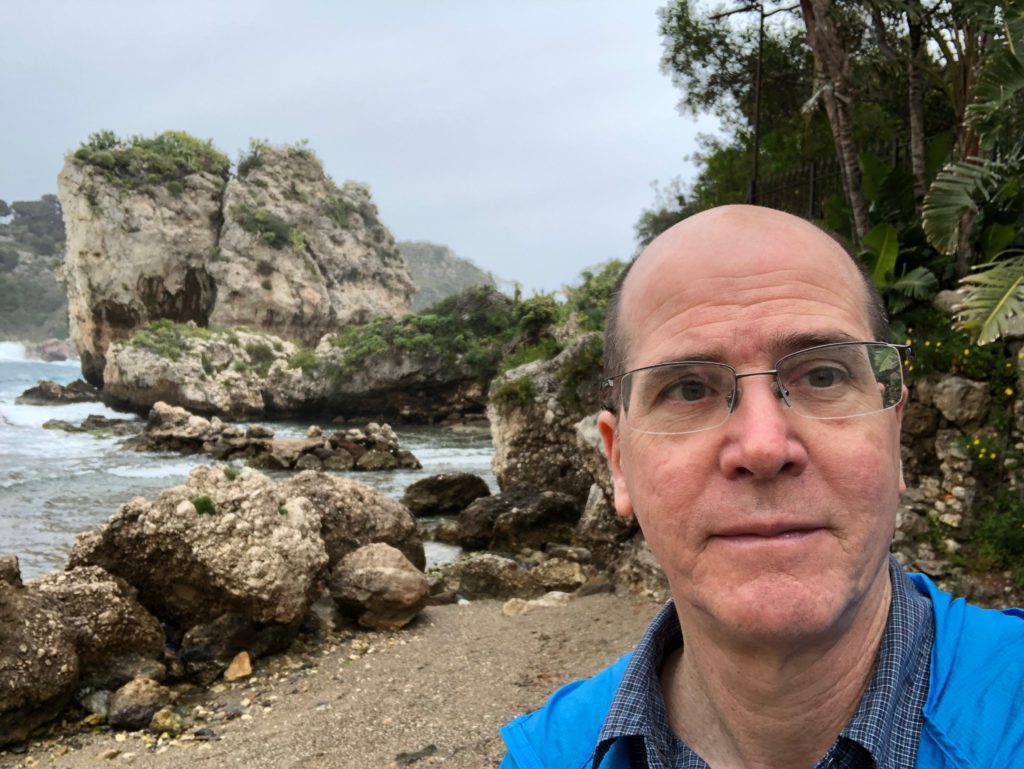
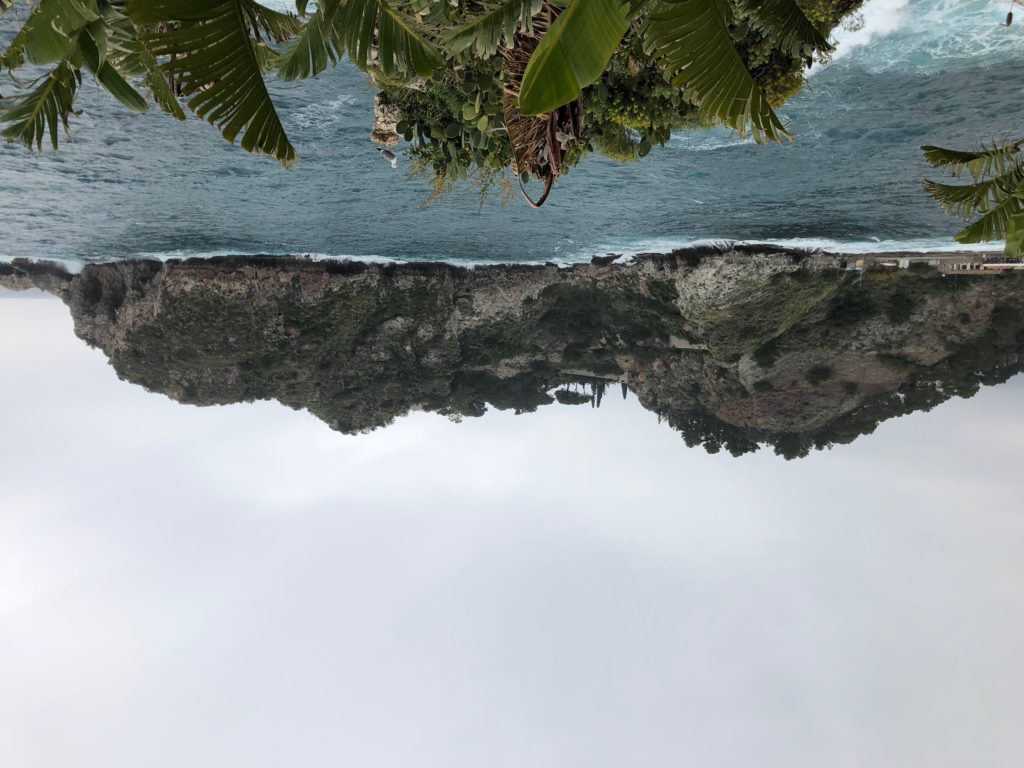
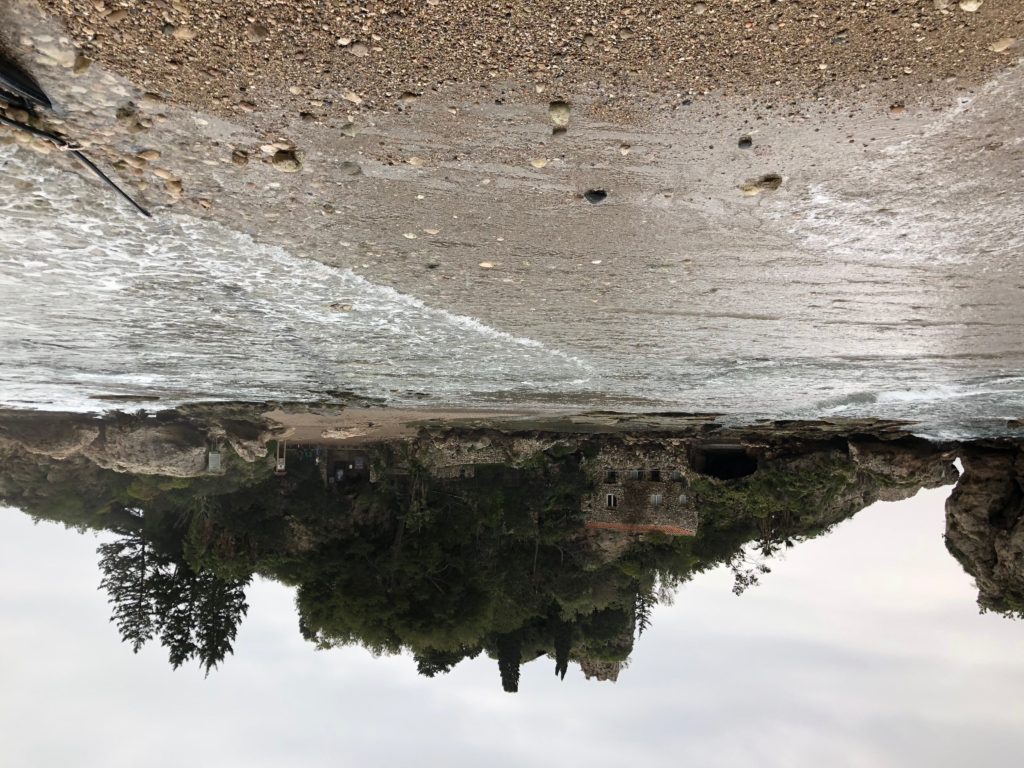
We later ate at a wonderful seaside restaurant recommended by a teacher friend of Kevin’s and returned up to town via the cable car, happy that we were able to see the highs and lows of this lovely resort area! Next stop, southern Sicily, to an agritourism resort near Agrigento, some fabulous Greek ruins, and the birthplace of Kevin’s grandfather, Racalmuto!
